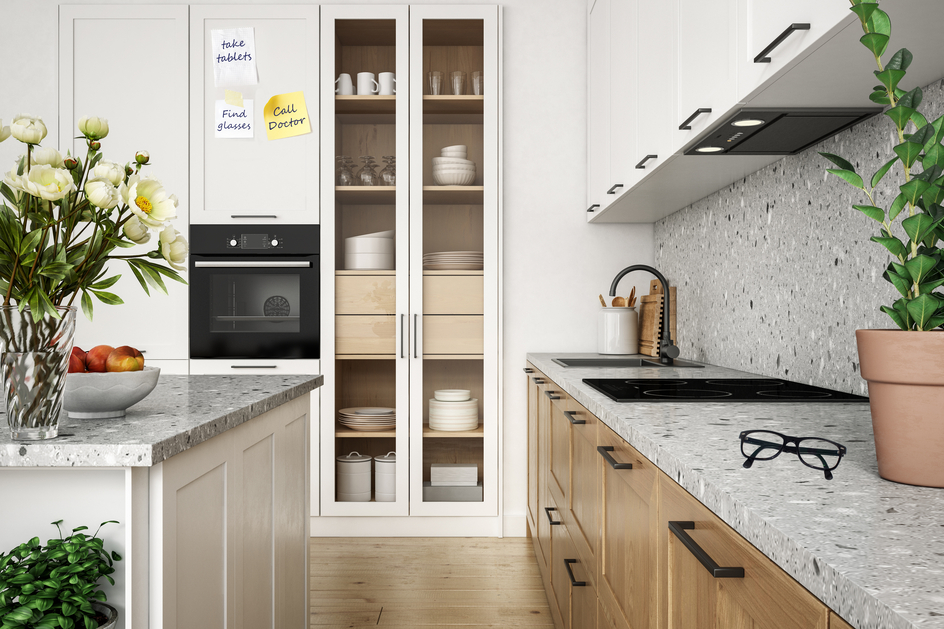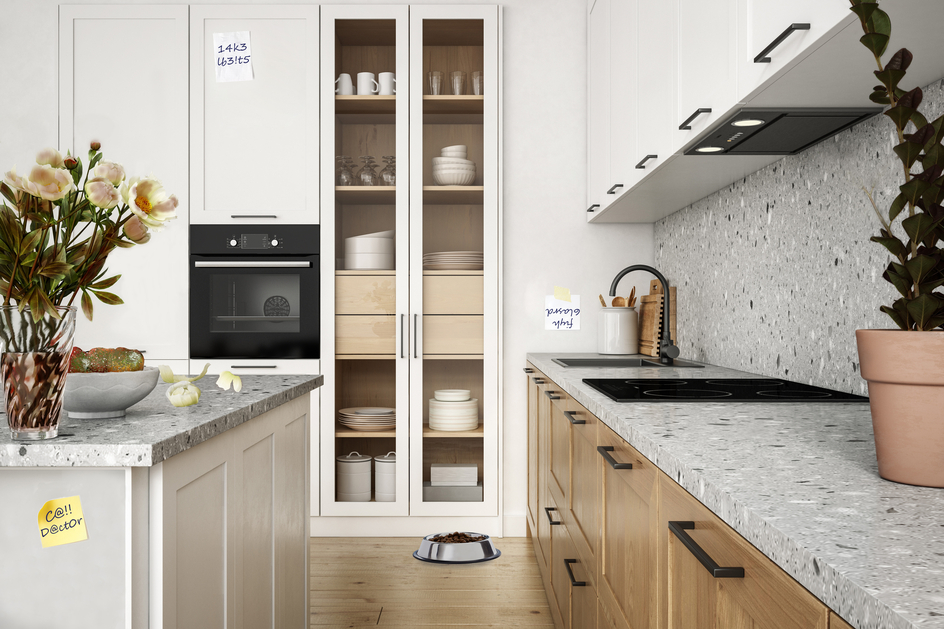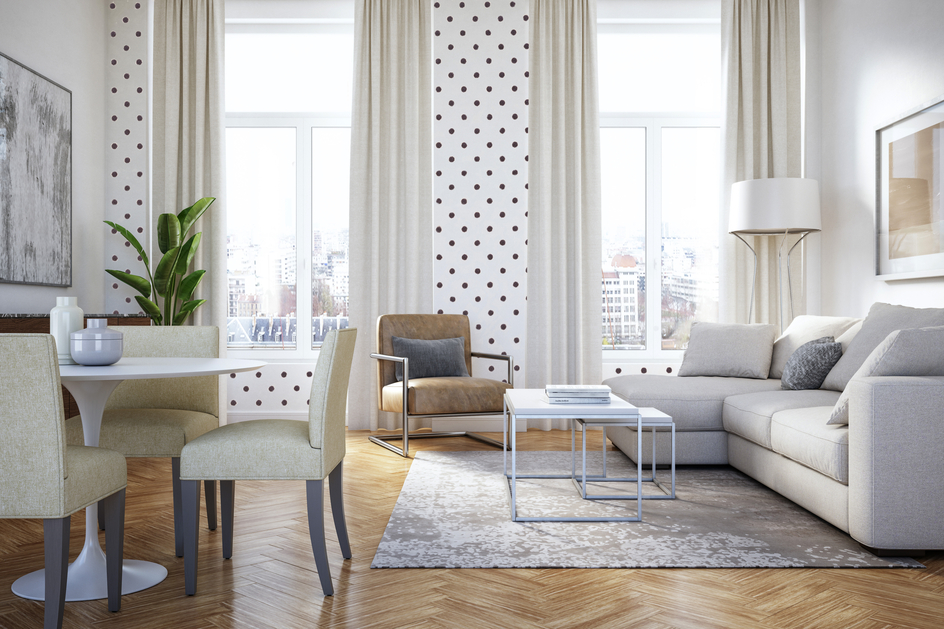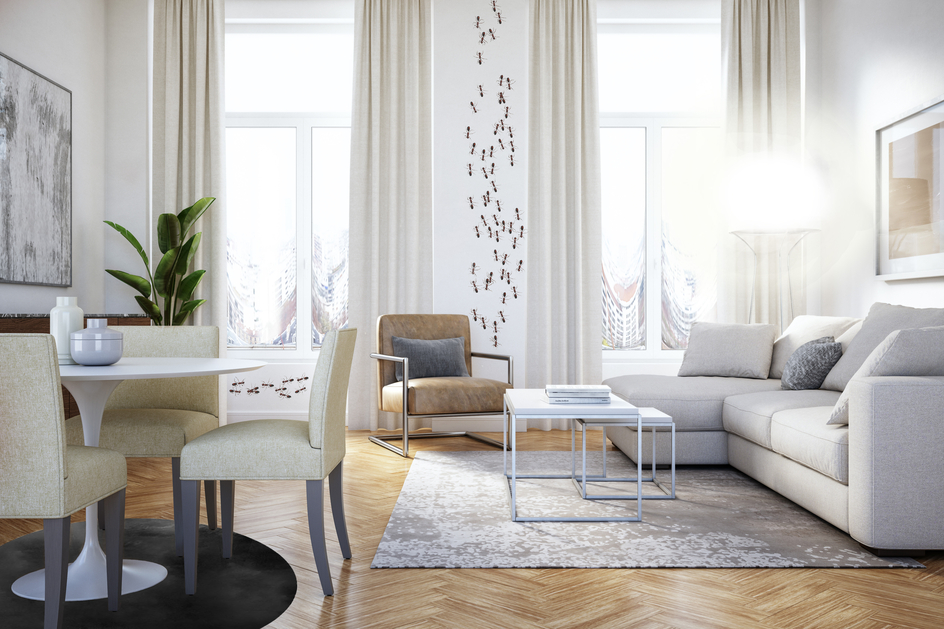Like one in five Canadians, you may have experience caring for someone with dementia — but you may also wonder what dementia symptoms actually feel like. Knowing how Alzheimer’s disease, vascular dementia and other forms of dementia affect thinking, understanding emotions and daily activities can go a long way to help you support your loved one.
At Amica, we help families and caregivers with tips on how to provide assistance, joy, and purpose for seniors with dementia. Read Seven ways to stay connected to seniors with dementia and Is it time to consider dementia, memory or Alzheimer’s care?, for instance. Amica’s Memory Care program was also founded on proven best practices by Dr. Heather Palmer, a cognitive-aging specialist.
Understanding the challenges of living with dementia
To help you picture how Alzheimer’s and other kinds of dementia impact daily life for your parent or spouse, we created a series of visuals based on insights from Dr. Palmer.
- Use the sliders on each image below to view how the same scene may look to someone with and without dementia.
- Underneath the images, you’ll find explanations of the perception and behaviour changes that can occur for people living with dementia.
- Remember: dementia is an individual journey with a range of cognitive effects, so experiences will vary from person to person.
How Alzheimer’s and other types of dementia can affect a person
Note: Drag the slider right and left to see how this scene could appear to someone with and without dementia.
Key changes:
- Reminder notes: Using reminder notes can be helpful, however a person living with dementia may be disorganized. Instead of posting them in one location, for instance, the notes may be randomly placed all over. Additionally, someone with cognitive impairment may have trouble reading their own handwriting, so what they see is a random collection of letters that don't make any sense. For example, ‘Call Doctor’ may look like ‘C@!! D@ct0r’
- Plants and flowers: The plants and flowers are dying. (One is no longer in the image because it has died and been disposed of.) Many people who have Alzheimer’s or dementia neglect to take proper care of their home, plants, pets, and even sometimes themselves
- Glasses: Everyone misplaces their glasses at some point. Individuals living with dementia have a greater tendency to misplace multiple objects, however, even sometimes placing them in unusual locations
- Pet food: People with dementia have greater difficulty breaking old habits and building new routines. As an example, they may feel compelled to put out food for a pet they no longer own.
Examples of cognitive effects of dementia
Note: Drag the slider right and left to see how this scene could appear to someone with and without dementia.
Key changes:
- Dark sky: The dark sky reflects how many people living with dementia get their days and nights mixed up. Despite outward signs that it's day, they may perceive it to be night and vice versa. Believing that it's 4 p.m. when it is actually 4 a.m. can be frightening and confusing.
- Shoes: The slippers have been stored here in a manner that may have made sense at the time. A person with Alzheimer’s or another dementia condition will often misplace items for several reasons. Most notably they may put something in a location that makes sense at the time but does not make sense later when they are looking for them
- Garden tools: The tools on the grass and sofa represent safety hazards that seniors with dementia often face. That, coupled with a tendency to pay less attention when moving through their environment, increases the risk of tripping, falling and injury, especially where sharp objects are involved.
- Dying plants: We can also see dying plants once more, due to neglect and perhaps not knowing what to do with the dead flowers.
Perception challenges for people with dementia
Note: Drag the slider right and left to see how this scene could appear to someone with and without dementia.
Key changes:
- Bugs on the wall: Visual distortions can be frightening to someone living with dementia. For example, a busy wallpaper design may look like a pattern of bugs crawling on the wall.
- Black hole: Shadows are another visual distortion that people with Alzheimer’s, or another cognitive disorder, may experience. Shadows cast on the ground such as the one under the table may be perceived as big holes, and the person may become afraid of falling into what seems like a bottomless pit. So instead, they may walk around or avoid that space completely.
- Bright light: People living with dementia may have increased sensitivity to light. To them, the soft glow of a floor lamp may seem glaring and uncomfortable to look at, and even distort how they see the area around the lamp.
- Window view: The scene outside the window looks distorted. In addition to visual challenges, impaired depth and distance perception create even more dangers for a person with dementia. For example, pouring boiling water for tea, or using the stairs can become hazardous.
Looking for more insights on how to support a spouse, parent, friend, or family member with Alzheimer’s disease, Lewy body disease, or another type of dementia? Read one of our many helpful articles:
- Helping seniors live better with dementia
- Expert advice on how to support seniors with dementia
- How Amica Senior Lifestyles supports seniors with dementia
- Better design for people with dementia
- Six ways to host dementia-friendly gatherings
- How to reach out to people who have dementia
If you’re at the stage where you’re starting to research nursing homes, long-term care or a private retirement residence with assisted living, be sure to download our comprehensive Memory Care Guide. Plus, book a virtual or safe and private in-person tour at an Amica residence near you. Unlike publicly subsidized facilities, Amica provides professional Memory Care and around-the-clock support with premium hospitality — including exceptional dining, activities, and amenities — in some of Canada’s best neighbourhoods.






